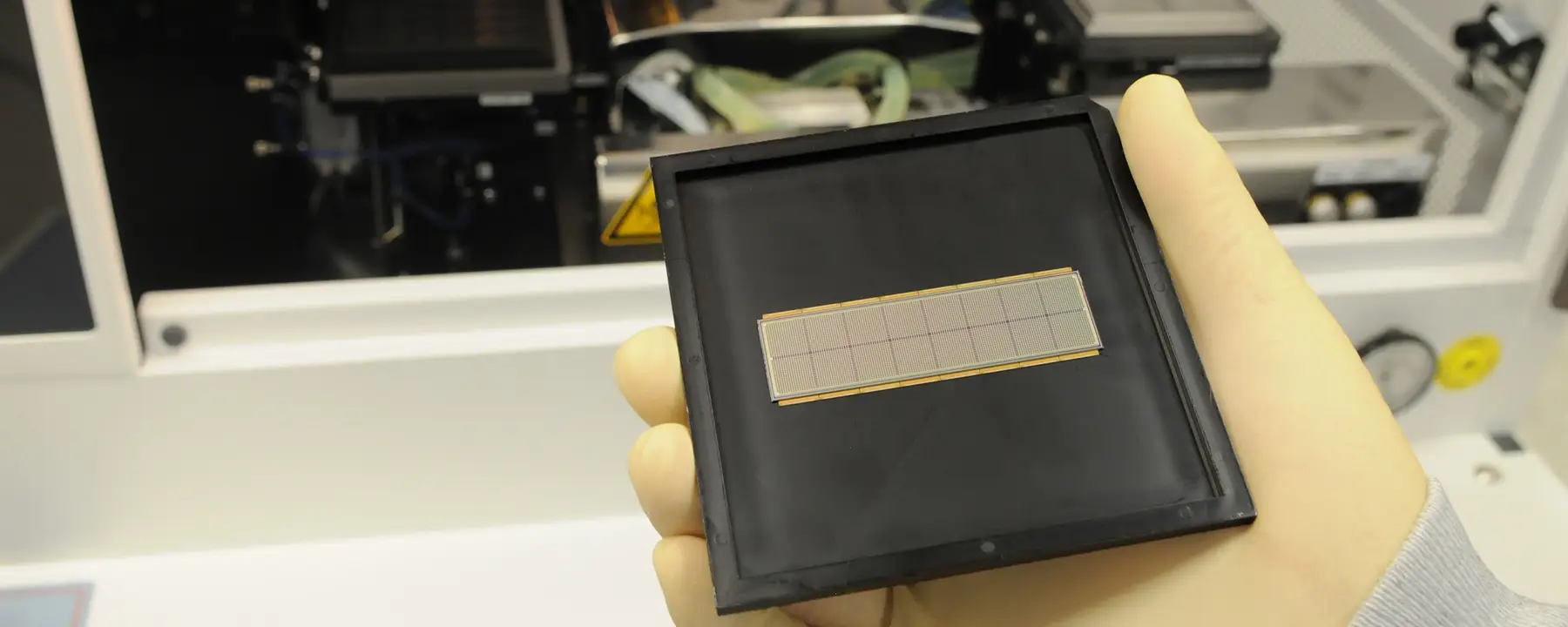Applying our high-density integration and assembly technologies to track subatomic particles
The Large Hadron Collider located at CERN in Switzerland is the world’s largest and most powerful particle accelerator. The Compact Muon Solenoid (CMS) experiment sought to use this particle accelerator to track subatomic particles generated in particle beam collisions.
The U.S.-CMS team, led by scientists from the Fermi National Accelerator Laboratory (Fermilab), needed high-density flip chip technology to produce pixilated detector modules that would make up a portion of the CMS apparatus used to track the particles generated during a collision.
Powering Experimentation with the Large Hadron Collider
For several years, we have been working with Fermilab and the U.S. group supporting the CMS experiment. Our advanced interconnect and assembly technologies were used to fabricate arrays of solder bumps—each bump is only 25 microns in diameter—on integrated circuit wafers. The solder bumps provide the electrical and mechanical connections needed to assemble devices into sensor modules.
Multiple bumped devices are flip-chip attached to monolithic sensor devices to create multichip modules that make up a layered detector structure at the heart of the CMS apparatus. The full detector is used to track the subatomic particle generated in collisions, allowing scientists to reconstruct each collision event and track the particles generated.
Confirming Existence of Higgs Boson Broadens the Horizons of Particle Physics
The CMS apparatus allows researchers to identify the different particles created in the collision experiments, including the elusive Higgs boson, whose existence was confirmed by CERN researchers in March 2013 and hailed as a monumental achievement in the field of particle physics.
Our collaborations with Fermilab on the CMS project illustrate our commitment to supporting the scientific community in pursuit of enhanced understanding of physical laws. Our support for breakthrough high-energy physics research continues as we help develop the next generation of CMS detector modules that are part of upgrades under way at CMS.
Our team also conducts similar work for clients around the world that require interconnect and packaging solutions for high-energy physics and advanced imaging applications.
- Fermi National Accelerator Laboratory
